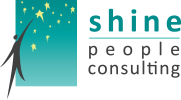.. the complexities of the multi cultural NZ workplace
 “What we need is a great big melting pot” at least, that’s what Blue Mink sang about back in the 1970’s. Well it seems as though we are on track to achieve that here in New Zealand. Statistics New Zealand projections indicate that by 2021, about 25% of New Zealand’s workforce will have been born overseas, representing one of the most ethnically diverse societies and, in turn workforce, in the OECD.
“What we need is a great big melting pot” at least, that’s what Blue Mink sang about back in the 1970’s. Well it seems as though we are on track to achieve that here in New Zealand. Statistics New Zealand projections indicate that by 2021, about 25% of New Zealand’s workforce will have been born overseas, representing one of the most ethnically diverse societies and, in turn workforce, in the OECD.
The research is clear, a diverse workforce is good for business. People from diverse backgrounds approach a problem from different viewpoints, bring new ideas, skills, knowledge and thinking. The collective range of knowledge and experience is critical to innovation and producing a better finished product. New Zealand needs these people to take its place on the global stage.
There are other subtle shifts in society; a culinary symphony of food (think about it, how many more ethnic food places do you have compared to 10 years ago? ), dress, music and dance. These shifts in turn bring out a sense of tolerance towards things that are “less like we know”.
However, it’s not always so peachy in the workplace. In contrast to some other countries New Zealand is still in the evolving stage of understanding how to engage with, and bring out the best in, people not rooted in kiwi cultural values and ways of doing things.
My experience working in the area of cultural diversity management (CDM) in Canada in the early 90’s showed me how a focus on CDM enabled the business to harness the strengths and talents of a diverse workforce. With an interest in workplace development, my experience was one of inclusiveness and embracing individual difference. The emphasis was on bringing out the best in their people rather than chipping away at the difference to shape to the ‘norm’.
Cultural values, particularly our subconscious, shape how we see things. We apply our own cultural lens to our picture of what is right and wrong, good or bad, ugly or beautiful, and what we determine as the ‘norm’. We then measure everything around us against this benchmark ‘norm’. Of course, we (I) am right and you (the outsider) are wrong. Right? …. Sorry, wrong…
Given the choice between a kiwi and a more skilled migrant, employers are more likely to steer away from the migrant because of the unknowns. It falls into the ‘too hard’ basket. Unconscious prejudice surfaces, negative assumptions are made as to why the arrangement wouldn’t work, as opposed to ‘how to make it work’.
Working with a cross cultural workplace and team isn’t rocket science. It does need thought and a focus on cross cultural skills development for people leaders. Here’s some easy steps below.
Tip # 1 – Bringing Your People on Board – Inducting Migrant Workers
With more employers hiring key skills offshore uppermost in the employer’s mind is “will they stay?”. They are more likely to, with planning and effort. I can’t emphasise enough how important this is . Good settling in support reduces the flight risk back to their home country. It’s not just about the worker, it’s also about their family. Housing, schooling, building social networks and pastoral support are all key ingredients. Ask your new employee “what support do you need” and regularly check in with them to see how things are going for them and their family.
As a migrant myself, I remember of the highs of learning and navigating my way in a new country; as well as the lows of homesickness, disconnect and not belonging. It takes time to put down new roots and everybody transitions differently. That experience influenced the voluntary settling-in work that I now do with refugee communities and the Nelson Multicultural Council.
Tip # 2 – Get to Know Your People
Take the time to understand your people, their backgrounds and importantly, the circumstances that brought them to New Zealand. You might be surprised at what you learn.
Our cross-cultural workforce is made up of both migrants and refugees. At a first glance what is the difference? We are guided by the high level pointers of what we see and hear; the colour of skin, language and dress. Dig a bit deeper and you will find that the person is either a migrant or a refugee. There’s a big difference between the two:
|
Migrants |
Refugees |
| Options | No options |
| Plan | Escape |
| Travel documents | May have no travel documents |
| Possessions | No possessions |
| Say farewell | Secretly leave |
| Can visit home country | No contact/visits |
| Free to return | Unlikely to return |
Source: Refugee Services Nelson
Migrants, along with refugees, share similar settling in experiences and face numerous challenges in the workplace that they do not share with their employers. Language barriers, homesickness, family separation, disconnect with their cultural roots, difficulty in finding jobs, adapting to a new way of living and working. Refugees, however have much more complex, and hidden, dimensions that impact on how they live and work in a new society.
Tip # 3 – We all See Things Differently
Understand that cultural values and context influence the way people see, and respond to, new situations and problems.
With migrants it’s about understanding, that they do things differently. From Wensleydale cheese with Christmas cake (Yorkshire); the French embrace (a bit too close and personal for some); Chinese love of late night socialising; to Indian expectations of respectable behaviour for single women. Tolerance and understanding is the name of the game here, but it doesn’t imply that you necessarily agree with the difference.
For refugees it is more complex. Refugees bring with them the political and social regime they have fled from; suppression, ethnic cleansing, torture, rape, incarceration in refugee camps (sometimes up to 30 years). The cultural and social complexities of refugees often remain hidden in the workplace. The issues are contained in their communities. For a refugee who has lost their family, their home and their possessions their cultural identity and values are the only things left. This affects how they respond to new situations particularly in the workplace. I recently went to a seminar featuring Dr. Love Chile from AUT. As Dr. Chile put it “Refugees aren’t stupid, they’re smart. They survived”.
Tip # 4 – Clear Communication – Yes doesn’t always mean yes!
Nodding, which Kiwis take as affirmation, along with a ‘yes’ may imply that that the person has understood and can carry out the instruction. In many cultures ‘yes’ is an acknowledgement of respect towards an authority figure. So the conversation might go like this:
Supervisor: “So, you understand what you have to do?”
Employee (nodding): “Yes”
Supervisor: “Sweet, come back to me if you have any problems”
In reality, the employee may have no idea of what you are talking about, what you want them to do and how to go about the task. They will be too embarrassed and humiliated to admit that. So stop and re-check in with them. Think about how you give instruction and check that they have understood your instruction;
“Please tell me what we have just agreed you will do”
“Please show me/tell me how you will do this task”
Use open questions rather than closed “yes/no” questions.
Slow down and use clear, simple and jargon free communication. Avoid Kiwi’isms that only make sense to Kiwis – “good as gold”, “turned to custard”, “rug up”. I recently observed a cross-cultural exchange that illustrates this point.
Fluffy Ducks…..
I was at the checkout in the supermarket. The checkout operator is a young, Indian female. The customer is a middle aged kiwi male, dressed in shorts, boots and beanie hat. Your average down to earth kiwi man.
Checkout Assistant (to customer): How is your day going?
Customer: ‘Box of fluffy ducks’
Checkout Assistant (looking puzzled). “We don’t have fluffy ducks”
Customer (annoyed): “I don’t want fluffy ducks, what are you talking about?”
Exit one annoyed customer and one confused (and upset) checkout operator.
Through one simple cross-cultural communication exchange we have the beginnings of a conflict situation.
Be comfortable with long silences, the person may be processing what you have to say and weighing up how best to respond.
Tip # 5 – Invite your Non-Kiwi into the Conversation
Proactively draw in your non-kiwi (migrant or refugee) into conversations in the workplace. Refugees and migrants tell me of their difficulty in speaking up and contributing their opinions. Those from a high power culture are often under estimated as they are culturally not forward in speaking in team or public situations. I have personally observed how less assertive non-kiwis have unintentionally been talked over by other people. For a people leader look for the quiet migrant who is actively listening but not contributing and ask them “(name) what are your thoughts?… what do you think (name)?”.
Tip # 6 – Consider your Status
Be aware of your status as an authority figure. New Zealand is a low power distance culture. We are comfortable with having our instructions and viewpoints challenged. Kiwis may voice “that’s not going to work because.”. The same can’t be said for many other cultures. A high power distance culture person is culturally conditioned not to question authority, or offer their opinions, and will follow instruction irrespective of whether they think the instruction is wrong.
I had personal experience of this when working with a well educated Bhutanese former refugee who speaks good English. Assisting him to write an email he went very quiet at what I had written. I asked him what he was thinking. He said that in his culture you would have to ‘tell the person what to do, if you give them an option they won’t do anything’. We talked this through. The email was intended for a NZ/European Pakeha volunteer audience, they would be offended at the directive of being told ‘what to do’. I advised that it would be better ‘ to suggest, or propose’ a solution. It was an opportunity for both of us for ‘cultural perspective checking’. He said that in his culture he would not question authority at all. I asked ‘not even if you knew the instruction was unsafe?’. He said ‘No’. I suggested to him that if we were to work together that I needed him to tell me if he disagreed with any suggestion of mine and that I was used to, and comfortable with being challenged. He looked unsure. I asked him if he was ok with that. He said ‘yes’ but my reading of his response said ‘maybe’. Although I had given him permission I knew it was unrealistic to think that he could undo a lifetime of cultural conditioning in one go. That would take time and trust on his part and understanding on mine.
If you want to read a good example of what power distance influence looks like in practice read Malcolm Gladwell’s book ‘Outliers’. The case study of Korean Air illustrates the influence of the Korean high power distance culture with disastrous consequences. Transfer the same scenario to many of the higher risk industries we have in New Zealand – mining, forestry, fishery – all which have very multi-cultural workforces, and you quickly understand the business case for cross-cultural competency workforce strategies. It’s no longer a ‘nice to have’ but a ‘must-have’ competency.
In order to be able to have respectful cross-cultural relations, we have to be aware of cultural differences. Working cross-culturally to bring out the best in your people takes tolerance, a willingness to do things differently, the courage to be the student as we learn from others, and openness to see things from other’s perspective. All foundation people skills for the global business leader.fluffy ducks
One final thing. What does ‘a box of fluffy ducks’ mean? Let me know. Thanks.


This Post Has 0 Comments